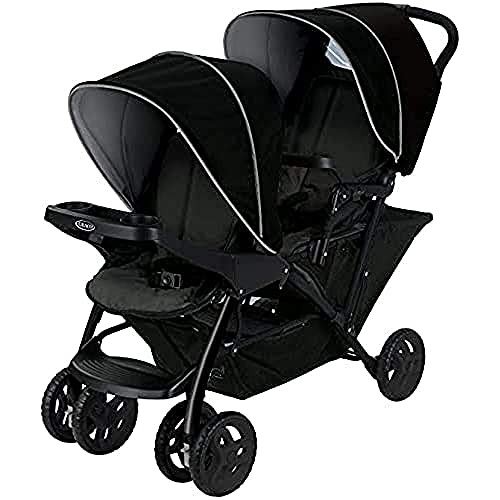10 Reasons That People Are Hateful Of Pushchair

Understanding Prams and Pushchairs: A Comprehensive Guide for Parents
When it concerns choosing the best mode of transportation for youngsters, moms and dads are often overwhelmed by the variety of alternatives readily available. Prams and pushchairs are among the most typical options, and each has its own special features catering to various needs. This short article dives deep into the world of prams and pushchairs, detailing their distinctions, advantages, drawbacks, and ideas for picking the right one for your household.
What is the Difference Between a Pram and a Pushchair?
In the beginning glance, prams and pushchairs may appear similar, but they serve different functions based upon a child's age and developmental phase. Below are the primary distinctions:
| Feature | Pram | Pushchair |
|---|---|---|
| Age Range | Usually for newborns approximately 6 months | Appropriate for children 6 months and older |
| Design | Flat, horizontal lying position for newborns | Upright seating position; more versatile and mobile |
| Use | Mostly for strolling with infants | May consist of numerous seating choices and configurations |
| Foldability | Frequently bulkier and less portable | Generally light-weight and foldable for easy transportation |
Kinds of Prams and Pushchairs
Picking the right pram or pushchair can depend upon different elements, consisting of the type, functions, and way of life of the household. Below are the main kinds of prams and pushchairs available in the market:
Prams
- Conventional Prams: Designed for newborns, they frequently include a deep and comfy bassinet, making them ideal for young babies.
- Travel System Prams: These can shift from a bassinet to a young child seat, typically including an infant vehicle seat for ease of travel.
Pushchairs
- Requirement Pushchairs: Offer an upright seat and appropriate for older babies and toddlers. They typically feature reclining abilities.
- Umbrella Pushchairs: Lightweight and extremely portable, these designs fold compactly, making them best for travel.
- All-Terrain Pushchairs: Designed for rugged landscapes, they include bigger wheels and superior suspension systems for off-road capabilities.
Benefits and Disadvantages
Advantages of Prams
- Comfort for Newborns: Their flat, horizontal style is best for the healthy spinal development of babies.
- Stylish Designs: Many prams come with classy looks, appealing to fashion-forward moms and dads.
- Large: They tend to use a bigger area for babies to move easily.
Drawbacks of Prams
- Bulkiness: They can be heavy and difficult to maneuver, making them less convenient for public transportation or crowded areas.
- Cost: Prams normally include a greater rate tag compared to pushchairs.
Advantages of Pushchairs
- Mobility: Many pushchairs fold compactly and are light-weight, providing remarkable convenience for parents on the go.
- Flexibility: With multiple configurations available, pushchairs can suit numerous phases of a kid's growth.
- Simpler to Store: Their smaller sized size makes them much easier to store in compact areas.
Disadvantages of Pushchairs
- Less Comfort for Newborns: Most basic pushchairs disagree for really young babies unless created with a reclining function.
- Sturdiness Concerns: Budget pushchairs might not stand up to substantial usage compared to sturdier pram models.
Tips for Choosing the Right Pram or Pushchair
Picking the right pram or pushchair requires mindful consideration. Here are some critical factors to keep in mind:
- Age Appropriateness: Consider your kid's age. Double Pram Compact might be better for a newborn, while a pushchair might be chosen for an older kid.
Way of life Compatibility:
- If you often travel or utilize public transportation, a lightweight alternative might be more hassle-free.
- For active households who enjoy outdoor activities, a strong, all-terrain pushchair might be beneficial.
Storage Needs:
- Think about where you'll keep the pram or pushchair, as some models can take up considerable area.
- Budget plan Constraints: Prams can be pricey, particularly designer designs. Identify features that are essential to you before buying.
- Security Features: Always search for necessary safety features like straps, brakes, and toughness when choosing a pram or pushchair.
FAQs
1. At what age can my baby start utilizing a pushchair?
The majority of pushchairs appropriate for babies from 6 months, but some convertible models can safely accommodate younger babies when utilized with a car seat or bassinet attachment.
2. Can I take a pram or pushchair on public transport?
A lot of public transport systems accommodate prams and pushchairs, but it's smart to inspect particular policy standards ahead of time.
3. How can I keep my pram or pushchair?
Routine cleaning, looking for wear and tear, and lubing moving parts will help in maintaining your pram or pushchair's functionality and longevity.
4. Are travel systems worth the investment?
Travel systems can be a fantastic investment for parents who frequently travel, offering an all-in-one solution from cars and truck to stroller. They provide benefit and ease of shift, specifically for brand-new moms and dads.
5. Are there prams and pushchairs with additional functions?
Yes, lots of modern-day designs come with features like cup holders, storage baskets, adjustable manages, canopies for sun shading, and even folding systems that can be run with one hand.
Picking in between a pram and a pushchair is a decision that impacts daily parenting routines. By comprehending the distinctions, benefits, and suitable choices, households can make educated options that balance with their way of life requires. Whether it's a leisurely stroll in the park with a pram or an adventurous outing with an all-terrain pushchair, the best choices often lead to cherished memories and satisfying experiences for both parents and children.

